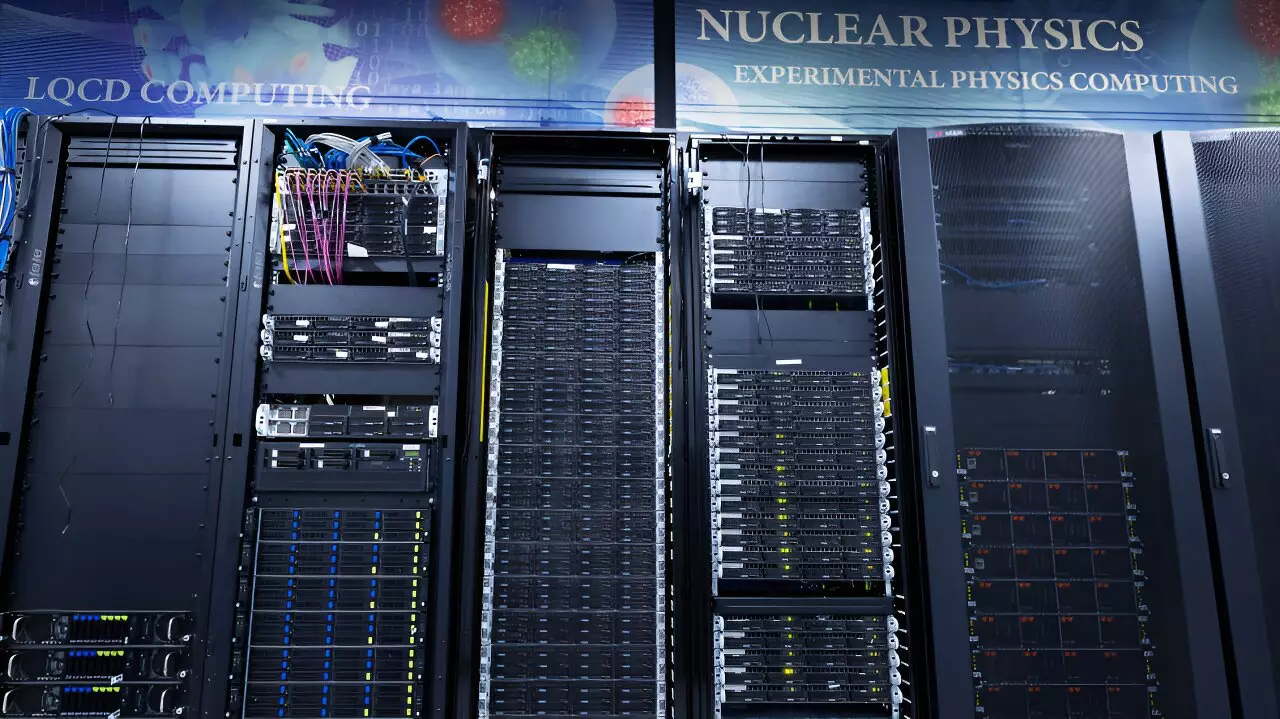The realm of particle physics continually challenges our comprehension of the universe’s most fundamental components. Contrary to our everyday experiences of solidity, matter is largely a dynamic interplay of subatomic particles. At the core of this phenomenon lies the structure of protons and neutrons, collectively known as hadrons. Inside these particles, an intricate ballet of quarks and gluons unfolds—components that remain largely mysterious despite decades of research. The HadStruc Collaboration, based at the U.S. Department of Energy’s Thomas Jefferson National Accelerator Facility (Jefferson Lab), has taken significant strides in decoding this cryptic composition by mathematically charting the interactions of these fundamental constituents.
The focus of the HadStruc Collaboration is on understanding ‘partons’—quarks and gluons that constitute hadrons. This research group comprises physicists affiliated with multiple academic institutions and plays a pivotal role in developing the theoretical framework describing the strong interaction, one of nature’s four fundamental forces. The group’s latest findings were published in the Journal of High Energy Physics, presenting new methodologies for probing the distribution and dynamics of partons within protons.
“The behavior of partons is essential for understanding the proton’s internal structure,” explains Joseph Karpie, a postdoctoral researcher involved in the collaboration. Theoretical physicists worldwide share the challenge of mapping the elusive distribution of quarks and gluons within protons—working toward a comprehensive model that describes how these particles interact.
A cornerstone of the HadStruc team’s approach is lattice quantum chromodynamics (QCD), a powerful mathematical framework that allows them to simulate the interactions of partons. Unlike simpler methods that primarily relied on one-dimensional parton distribution functions (PDFs), the team has developed a three-dimensional method that offers a more nuanced understanding. This innovative approach utilizes generalized parton distributions (GPDs), revealing insights into the spin and orbital angular momentum of quarks and gluons within protons.
Hervé Dutrieux, another collaborator from the William & Mary Department of Physics, elaborates on the advantages of GPDs: “They provide a clearer perspective on one of our key questions: where does the proton’s spin originate?” This represents a revolutionary shift in the quantum physics paradigm, suggesting that the proton’s spin is not solely the sum of its constituent quarks but instead includes contributions from gluons and the dynamic motion of partons.
The team’s research offers a promising framework for addressing intricate questions surrounding the mechanics of proton spin and structure. Their investigations into the energy momentum tensor—essentially a measure of how energy and momentum distribute within protons—also hold significant weight. Dutrieux notes, “Understanding the energy momentum tensor will facilitate insight into how protons interact with gravity in ways we are just beginning to fathom.”
The robust dataset generated from the collaboration, comprising 65,000 simulations executed on advanced supercomputers, is a testament to their innovative methodologies. This computed data is a vital step for the Quark-Gluon Tomography (QGT) initiative under the Department of Energy, with Karpie highlighting the importance of these simulations as “proof of principle.” The subsequent improvements in approximations promise to elevate the computational costs significantly, yet the potential insights are invaluable.
As groundbreaking as the theoretical frameworks are, the corroboration of these findings through experimental means is essential. The HadStruc Collaboration has already secured placements in high-energy experiments that utilize their theoretical advancements. Processes such as deeply virtual Compton scattering (DVCS) are currently underway at Jefferson Lab and other facilities worldwide—an integral part of aligning theory with practical applications.
Moreover, the looming Electron-Ion Collider (EIC) project at Brookhaven National Laboratory aims to further expand this exploration of hadronic structure. Karpie and Dutrieux anticipate that this equipment will push beyond existing measurement limits, allowing for a thorough analysis of hadron architecture and furthering our understanding of how these particles form the building blocks of matter.
The strides made by the HadStruc Collaboration signify a crucial advancement in the field of nuclear physics, particularly in their ability to forecast outcomes that current experimental setups may not fully capture. Despite challenges inherent in computational complexity, the collaboration’s dedication to prolific research underlines a significant effort to stay ahead in the fast-paced landscape of quantum mechanics.
Karpie’s vision of contributing predictive insights before the experimental validation emerges a desirable direction for future research in quantum chromodynamics. The exploration of proton structure continues to evolve promisingly, reaffirming that beneath the perceived solidity of matter lies a complex and dynamic universe waiting to be deciphered.


Leave a Reply